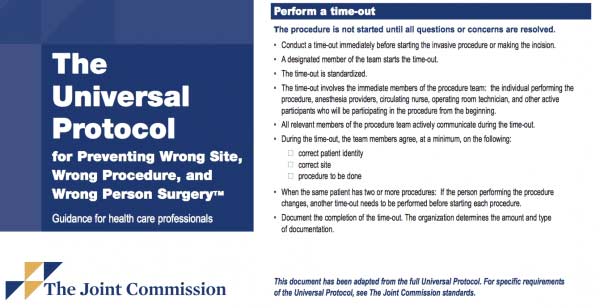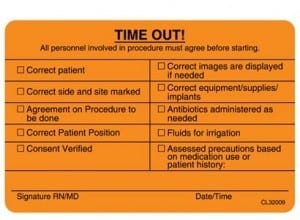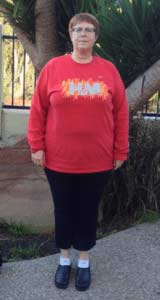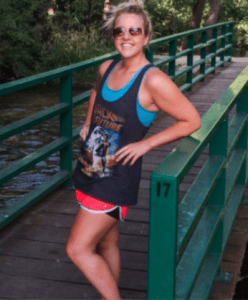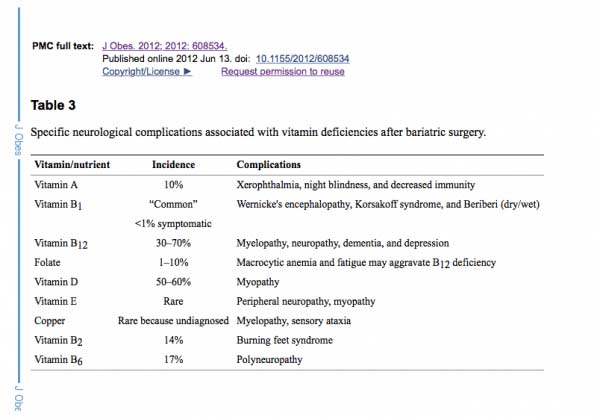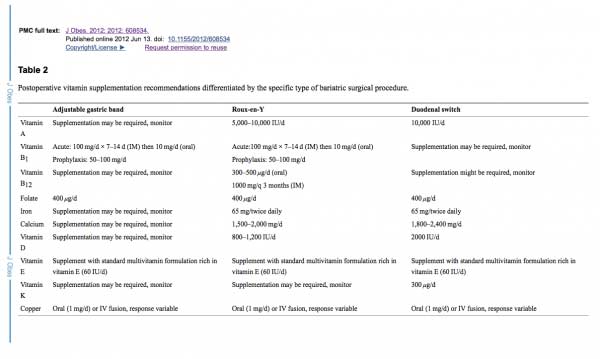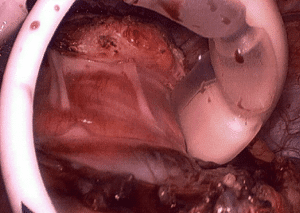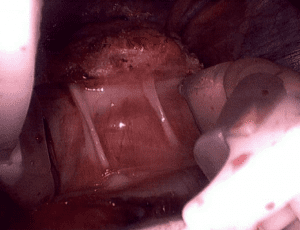Category: Weight Loss Surgery
Alcohol and Weight Loss Surgery Webinar May 20, 2015
July 27, 2015 7:27 am
Shared Success Story- Andrea R.
July 22, 2015 8:00 am
Since I was about 10 yrs old I have struggled with weight. I was always the chubby kid in class, and as I got older I was always the chubby friend. Being overweight didn’t affect me until I hit 220lbs at 15 years old, and as you know, kids can be mean and hurtful. At 18 years old I had my first child, during that time I dropped a little weight then ended up gaining it back and more. At the age of 19 I was sitting at 250lbs.
Fast forward 3yrs, I had my second child and once again, I lost weight just to gain back double what I lost. So now, at the age of 22 I was up to about 290lbs. Every day life became a struggle. I tried my best to stay active, but being overweight made me tired and made me feel like hiding. Over those years I tried everything from low carb diets, to diet pills, to b12 shots, and Weight Watchers; you name it, I tried it. Finally, I was fed up! I couldn’t take it anymore and I was ready to look into different options. I was 26 years old, 5ft 8inches tall, and a mother of 2 who just wanted to be active and healthy for my kids.
I decided that weight loss surgery was what I needed to do. At this point I was morbidly obese and at my highest of 326lbs. I met with Dr. Keshishian, and after going through the consultation we decided the duodenal switch would be the best option for me. On August 26th, 2013, I had my surgery weighing in at 306lbs. Dr. Keshishian is amazing! I didn’t have any complications. I was able to drink and eat small amounts normally.
Since having the surgery, just shy of the 2 year mark, I am now down to 178lbs. My life has changed so much since losing the weight! I honestly can’t describe how grateful I am that I was able to have the surgery withScreen Shot 2015-07-20 at 1.55.13 PM such an amazing Dr. and staff. Anytime I had a question or concern they were willing to hear me out and do whatever they could to assist me. Since losing the weight I am able to be the active mother I wanted to be for myself and my kids. Now I’m taking the steps needed to ensure my kids learn healthy eating habits and helping them understand how important exercise is.
Andrea R.
Informed Surgical Consent
July 18, 2015 9:39 pm
Surgical informed consent is the document that summarizes the discussion that has been carried out between the treating physician and the patient. It also outlines the expectations as well as the potential complications of the treatment being proposed.
An informed consent should mean that the patient is absolutely clear as to the procedure agreed upon and that is reflected on the consent. No abbreviations are allowed on the consent forms. Clearly, there are instances when a physician or surgeon providing service may have to deviate from the proposed plan and agreed upon procedure on the consent because of unexpected findings in the operating room.
Any patient undergoing surgery should be acutely aware of the terminology and the language used. With regards to weight loss surgical procedures, RNY and GB is not acceptable because they are both abbreviations.
Duodenal Switch is a distinct well described procedure with its unique identifiable code (43845 for open procedure) that is recognized by hospitals, insurance companies and the surgical societies.
Duodenal Switch operation is not SADI, SIPS nor a loop Duodenal switch. Any attempt to interchanges these terms or operations is inaccurate the say the least.
A surgical informed consent is signed by the patient ( or the guardian) and the treating physician. This document however is reviewed and confirmed by all those involved in the patient’s care delivered in the hospital. The consent is reviewed by the admission staff when taking the patient for surgery, preoperative nursing and administrative staff, operating room circulating nurse as well as the anesthesia staff. One step most patients may not be aware is initiated after the general anesthesia is induced. The operating room staff, anesthesia staff and the operating physician all go through a set of checklist known as “Time out”.
“Time out” involves confirming the patient’s identification as well as the proposed procedure as the patient had discussed with the staff and confirming the consent.
It is imperative that a patient have complete understanding of their surgical options available to them and critical that they have full knowledge of the type of surgical procedure that has been consented to and performed.
Iron Deficiency & Anemia July 15, 2015 Webinar RecordingExclusive Member Content
July 16, 2015 1:52 pm
Band Removal Revision to Sleeve Gastrectomy
July 06, 2015 11:49 am
Vena Cava Filter
July 06, 2015 7:09 am
Example of a Vena Cava Filter Video:
Shared Success- Whitney a RNY to DS revision
June 09, 2015 7:43 am
I was always the big girl, pleasingly plump, chubby. I was put on my first diet at age 12. By the time I graduated High School I had yo-yoed up to 200 pounds at College graduation I was up to close to 300 pounds. In 2002 I had RNY Gastric Bypass surgery. I was 39 and weighted 280 pounds. I was told it was the Gold Standard. The Band was still considered experimental and the Duodenal Switch was never mentioned as an option. In fact, I did not even know it existed.
I lost 110 pounds and was considered a WLS success. I did not have any food restrictions and I felt great and maintained the loss for five years. Then I started to slowly gain weight. In little under 5 years I gained 70 pounds. I developed Dumping Syndrome and my Stoma was stretched out. I joined Weight Watchers and lost 5 pounds in a year. Nothing worked. I developed ulcers, osteoarthritis, planter fasciitis and could barley walk a couple of blocks without pain. I was miserable. I felt like a failure
In 2012 started to research surgical options. A local surgeon wanted to “revamp” my already tiny stomach, put a band around my stoma, and “clean up my intestines”. I asked about revision to Duodenal Switch and was strongly discouraged, but I wasn’t going to settle because that was what he was only capable of doing.
I wanted the best. I wanted long term success. So I travelled from Northern CA to Southern CA for a consult with Dr. Keshishian. The only choice for me was to revise to DS. In December of 2012, I had revision surgery of my RNY to Duodenal Switch. One week after surgery, still in the hospital, I went in for a second surgery. Dr. Keshishian found a small leak. I spent an additional two weeks in the hospital. My experience was not the norm and a leak can happen in any surgery involving the stomach.
Recovery was slow but steady. The first 2 weeks Dr. Keshishian called me every three days to make sure I was doing ok. I still have his cell number in my phone. I was back to work 14 weeks after surgery. I could have gone back sooner.
Over the past year I have lost 115 pounds. My BMI is 20, and I feel great. I have my life back. All pre-op issues have been resolved and I am going to start training for a 5K.
My advice for anyone contemplating Weight Loss Surgery is to research all of the options available. Do not settle for a substandard surgery. Get a second or even third opinion. It’s not a decision to be taken lightly. It’s your life fight for it!
Whitney B.
Shared Success Story- Kylie
June 08, 2015 6:29 pm
I never knew how big and unhealthy I was until I decided I wanted a change. My experience with Dr. Keshishian and his staff was nothing less than amazing. He was very informative and made me feel comfortable and safe when undergoing the procedure. Not only did he operate on me, but also my brother, dad, and uncle as well. We are all so grateful for him and his knowledge as a surgeon. My mom had gastric bypass in 2005 by a different doctor and has numerous problems. We are all hopeful that eventually Dr. Keshishian will be able to help her also. Having my whole family’s support and understanding made the experience much easier for me. I am now happier and healthier than I’ve ever thought I’d be.
Before surgery, I weighed 250lbs, and my pant size was a 22. I now weigh 160lbs with a pant size of 8-10. I decided to have surgery because I wanted to be the confident girl who was trapped inside a 250-pound body to be able to shine. I wanted to be active and live a long and healthy life. I also wanted to start this lifestyle now so that when I have children one day, I can be a good example to them on how to be active. Most importantly, I wanted to be comfortable in my own skin. I wanted to feel beautiful. I was always “bigger.” I was a cheerleader from toddlerhood until high school and a swimmer for 12 years. I always stayed very active. Once I graduated high school, I moved out of state to attend cosmetology school and my active lifestyle completely stopped. I ate unhealthy and became very lazy. I wasn’t proud of the person I was becoming and struggled to change my bad habits. My brother had his surgery while I was in Idaho, and when I saw how great he was doing, I was inspired. I decided to fly home and meet these people and then it was my turn.
My Life has changed dramatically since I first met Dr. Keshishian. Working out and eating healthy have become habit. I ran in my first 5k, 10k, and half marathon. I continue to run every day in hopes of running in a full marathon. I LOVE to run, and have made it a way to relieve stress. Running has become good therapy for me. I love cooking and experimenting with foods I didn’t even know existed before I had surgery. It’s been 2 years, and I still haven’t bought or had a soda. I eventually gained what I call my “gym family.” I am there so often, that eventually, most of my friends were from the gym and people who have similar goals.
This surgery affects everyone differently. For me, it was a game I had to play with my mind. Being big, I loved the satisfaction of feeling full after a meal. I would order food and try to decide if it was enough to make me full. After surgery, I would forget that I couldn’t eat that much. I would still want to order the item with the most food. It was almost like the “Old Kylie” was still sitting in the back of my mind telling me what I would have ordered before my surgery. I had to learn to be tough, and ignore her. That was (and sometimes still is) one of the hardest things I’ve had to do. I would look in the mirror and still see a 250 pound girl. I had to have a mental talk with myself, and look at old photos. It was a temporary issue I had with myself. I’ve learned so much about who I am since the surgery, and am so happy with the woman I have become. Having this surgery has made me feel like I can conquer anything I put my mind to. I had no idea how mentally strong I was until I made the choice to have this procedure. This will always be one of the best decisions I’ve ever made for myself, and I’ll always be supportive of others who are thinking of choosing the weight-loss surgery. I owe Dr. Keshishian so much for giving me my life back. Thank you!
Neuromuscular Disease After Weight Loss Surgery
June 08, 2015 11:30 am
Weight loss surgical procedures may result in varying degrees of nutritional deficiencies. Some of these nutritional deficiencies may cause neuromuscular disease if left untreated, these include vitamins, minerals, and protein. The long-term effect of these deficiencies may presents as neuromuscular conditions including, weakness, numbness, confusion and all others if not-diagnosed and untreated. It is important to note that all weight loss surgical procedures require lifetime vitamin, mineral supplements and protein monitoring and possible supplements.
The table below outlines some of the specific neurological and neuromuscular disease complications following bariatric surgery. The most common deficiencies seen with the duodenal switch operation are fat soluble vitamin deficiencies. These include, Vitamin A, D, E and K. Duodenal Switch patients need oral supplements of Dry “Water Miscible” type of Vitamin A, D, E, and K based on their laboratory studies and needs.
The neurological deficiencies are manifested much more frequently with the Gastric Bypass than the duodenal switch operation. The most common nutritional deficients are that of B1, B12, Folate deficiencies that are common in Gastric Bypass. A list of possible neurologic deficiencies and there associated symptoms were summarized by Becker (2012). Another article with Nutritional Neuropathies.
Nutritional deficiencies are seen in a number of illnesses including weight loss surgery patients.
Stricture with Lap Band
May 31, 2015 6:44 am
One of the most common findings with patients seeking revision of the Lap band is the persistent and continuos nausea, vomiting and reflux, even though the band is emptied. The typical presentation is that of a patient who had an adjustable gastric band placed and adjusted. When the weight loss stops any attempt to adjust and tighten the band results in reflux, nausea and vomiting. Unfortunately, there is lack of recognition that even when the band is completely empty, and even if removed, then a patient can still have the symptoms present, if the scar capsule that forms between the band and the tissue is not removed.
It is critical that when a Lap band is removed that time is spent excising the capsule that is present to allow for the tissue beneath the band to return to its normal caliber.
Note in these images how with the Lap band completely open the tissue underneath is “restricted” by the capsule that has formed under the band. In this case the capsule was also excised and removed along with the band.



